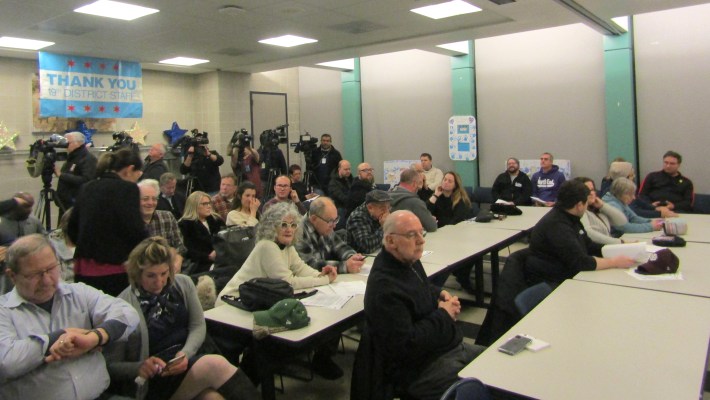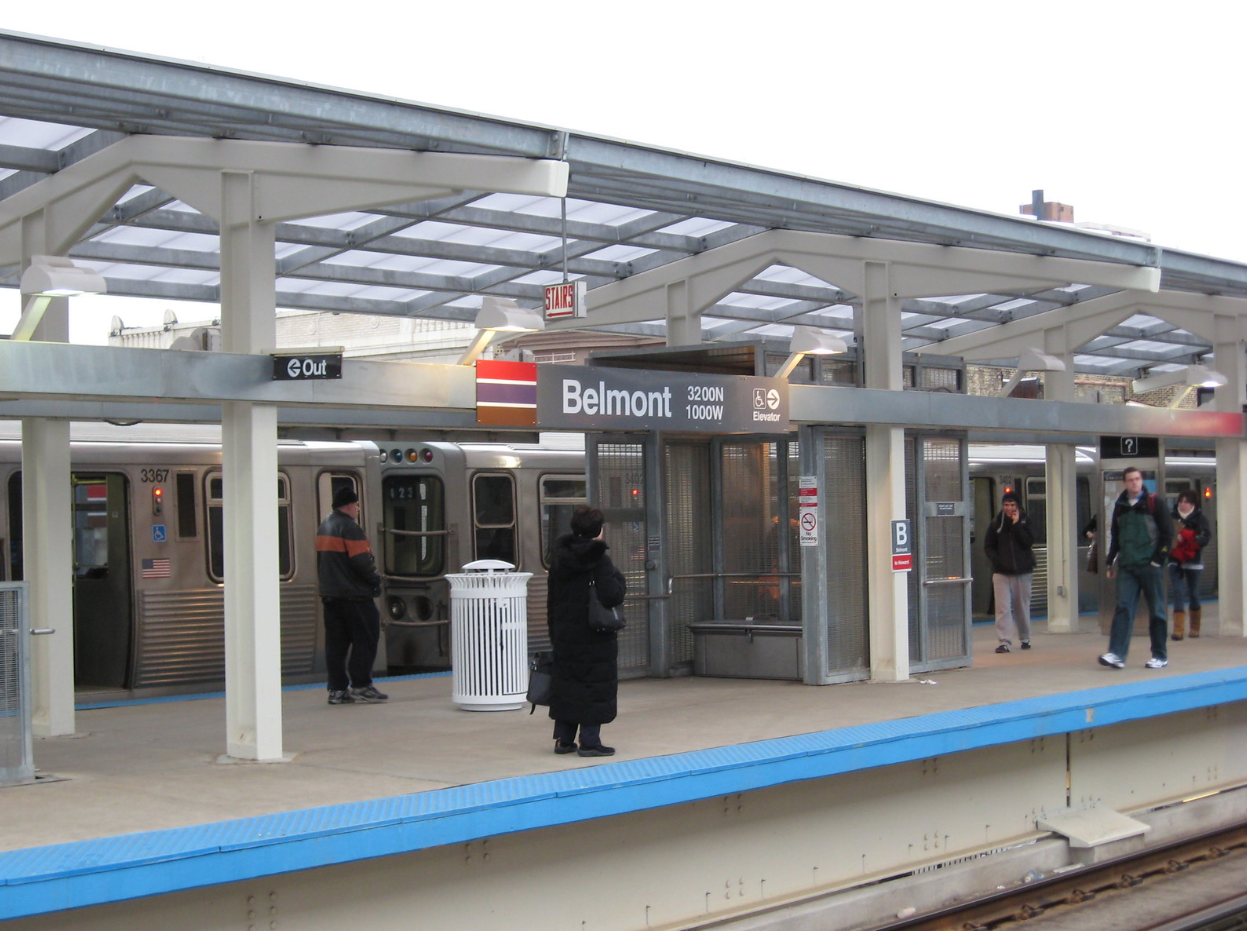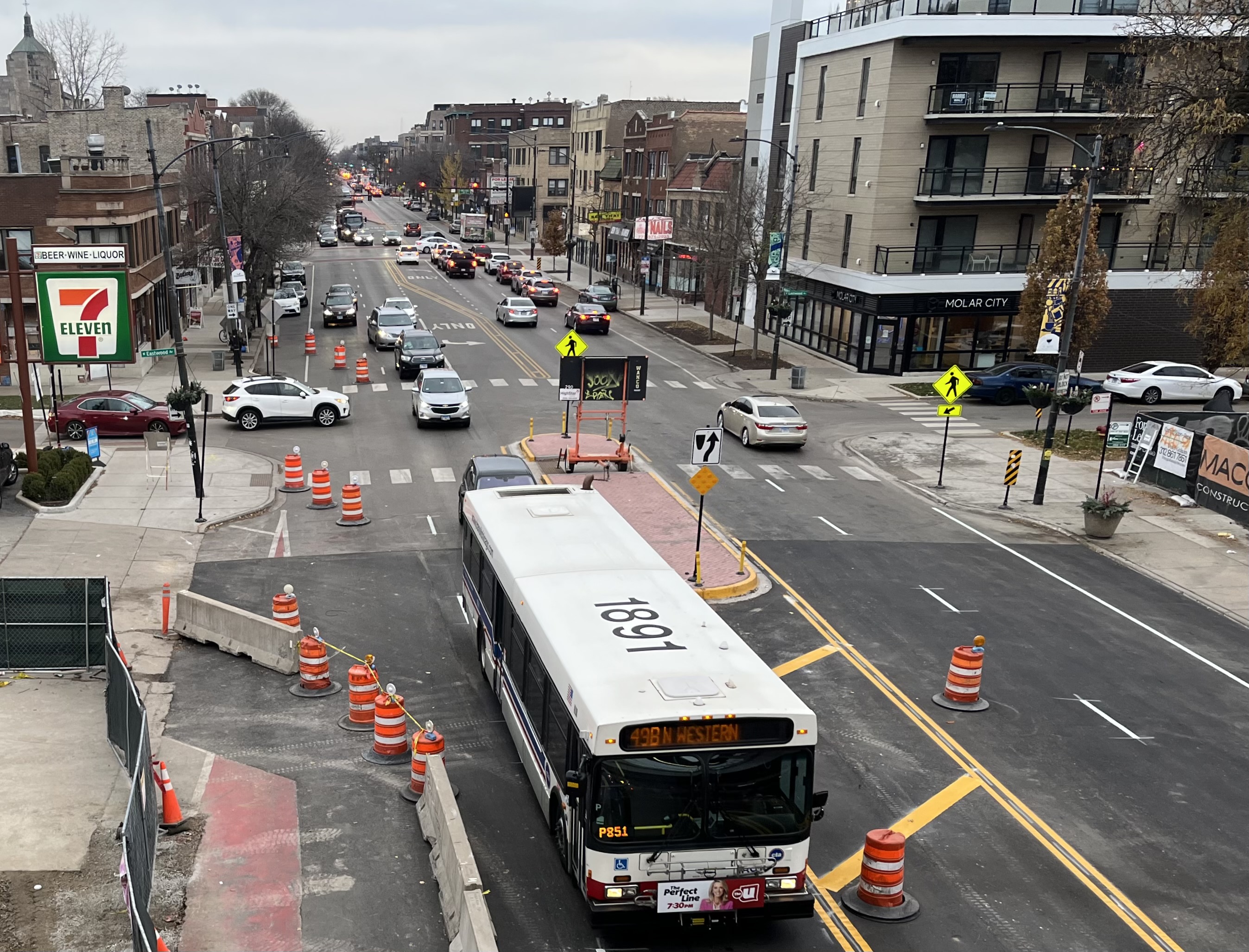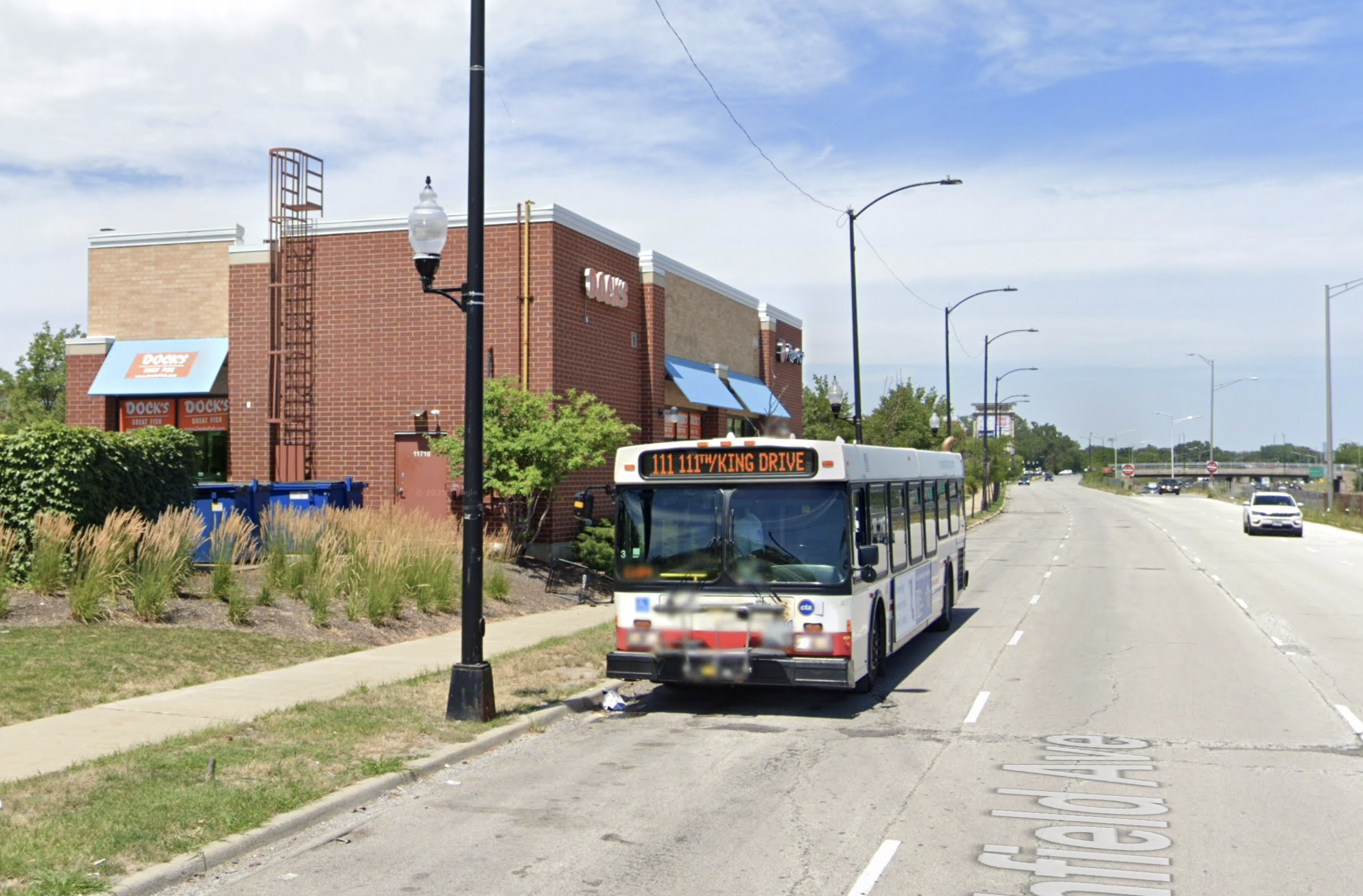Last night at the Chicago Alternative Policing Strategy beat meeting at the Town Hall District police station in Lakeview, held in the wake of a series of robberies and attacks on the Red Line, police and CTA officials told the large crowd of attendees that they would deploy more officers and security contractors at major Red Line stations. However, they added that there is only so much they can do with their limited workforce.
During the meeting, the overwhelming message from residents was that they don't feel safe on the Red Line, and they want CPD and CTA to do something radically different to address the issue. The transit officials said that they will add more officers at Belmont and other major Red stations, but emphasized that there are issues involved that can't be addressed through policing alone.
Greg Ignatius, who was beaten on the Belmont station's northbound platform escalator last Friday and still had bruises across the face from the attack, said the detective investigating the incident contacted him on Tuesday and told him that he was waiting for video footage from the incident. Ignatius asked the officials for an update.
Kevin Ryan, vice president of security at the CTA, responded that “the detective may have been mistaken” because pulling footage from the station cameras shouldn't have been an issue, He said he'd double-check with the staff.
Another resident, who said her friend was robbed at the Belmont 'L' station, asked why there isn't an around-the-clock police presence on the station's platforms. 19th District commander Chris Papaioannou responded that the CPD has officers patrol trains, and that his officers do joint missions with the public transportation unit and the nearby police districts.
When pressed on why CPD couldn't put officers on the platforms, Cindy Sam, the commander of the public transpiration unit, said it came down to staffing. “We're working with a finite [amount] of resources,” she said. “We're trying to put personal where crimes happen. The Belmont station is really large, as you know. 90 percent of the crime is occurring on trains. That's where the bulk of our manpower is.”
Another resident asked how large the transit unit's workforce is. Sam responded she didn't know offhand, but told me after the meeting that she estimated there are about 200 officers across three watches, including K-9 units. Asked if that means there are only around 66 officers spread across the entire system at any given time, Sam didn't dispute that figure. However, she added that the unit got 45 new officers over the course of last summer, and she expects to get another 10 this Sunday. Along with beefing up security at Belmont ("This is one of the premiere neighborhoods in the city, and you can't have people feel not safe,” she said), Roosevelt will also be getting more security. There have also been multiple recent attacks at that South Loop station.

During the meeting, Sam also claimed that crime dropped by 18 percent on the 'L' system overall in 2019 compared to 2018. However, a recent Chicago Tribune analysis of CPD data found that the number serious crimes -- ranging from pickpocketing to robbery and sexual assaults -- on the CTA has doubled since 2015, around the time ride-hail launched in Chicago and started siphoning off CTA ridership.
Sam later told me that that while the crime at the Belmont station rose in 2019, it went up by a smaller percentage than in 2018 -- 5 percent versus 25 percent -- so the local crime rate is leveling off.
Ryan added that some of the recent incident may be the work of a single group of teens, and the authorities are making progress on tracking down the source of the crimes, but he didn't elaborate any further.
Another resident asked what the station attendants' responsibilities are when it comes to responding to disturbances, saying that, while in the Loop, she tried to report a passenger acting erratically, only to have the attendant ask what she expected him to do about it. Ryan responded that the attendant should have called the police, and promised he would look into the incident.
Sgt. Tracey Edwards, a community policing officer at the Town Hall District, said that at the next CAPS meeting the authorities will explain to residents exactly what response they can expect from CTA staff and police officers during incidents on the 'L'. “There's going to be [occasional] mess-ups,” she said. “You need to know how it's supposed to go.”
Ryan added that the CTA hires private security to patrol the Belmont station between 10:00 p.m. and 6:00 a.m. “I work with the police department looking at the historical data, the ebbs and flows of crime,” he said. “We're probably going to increase patrols on Belmont. But let's make something perfectly clear: they're private security; they don't replace the Chicago cops.”
Ryan also mentioned that there are issues CPD officers and security contractors can't address on their own, such as people with mental health issues hanging around the station or riding the 'L'. He said he's been meeting with the Chicago Department of Family and Support Services to determine the best ways to handle such cases. “It's a very delicate situation, as you can imagine,” Ryan said. “We're not making excuses.”
The attendees also tried to suggest other solutions for addressing the root causes of crime on the CTA. One resident said he hires Black youth on the West Side to help him rehab vacant homes, which helps keeps teens out of trouble and lets them earn an honest living, but added that he's been struggling to get support for his work.
Ignatius suggested a way for passengers to share information to get quicker responses. “Has consideration been given to implementing some kind of app that would provide station or platform ID, where everybody could be on text chat together?” he asked. “The minute something starts, everybody could [get alerted].”
Ryan responded that, while CTA is looking at an app that would allow riders to text tips, it hasn't considered anything like what Ignatius suggested.






